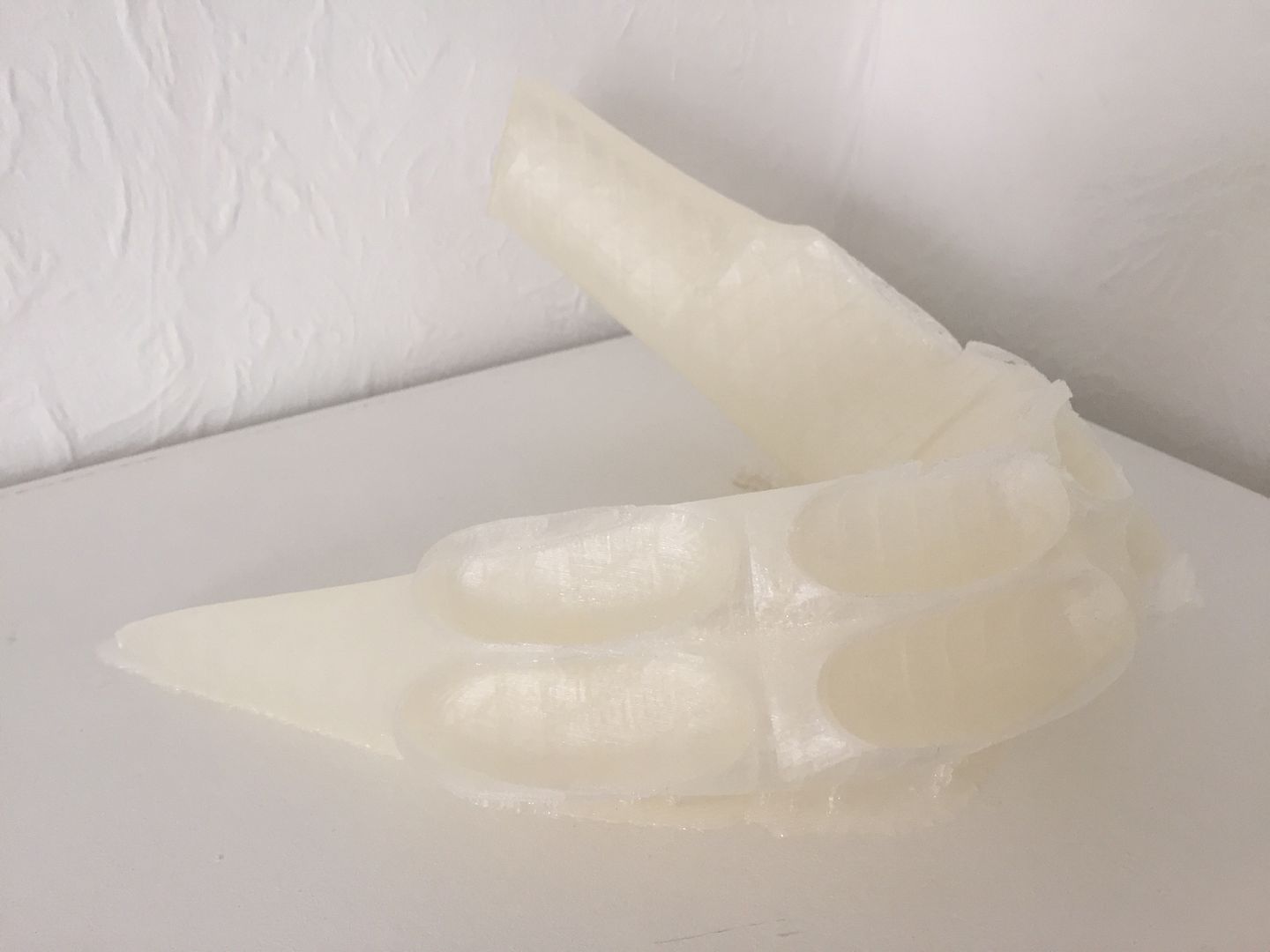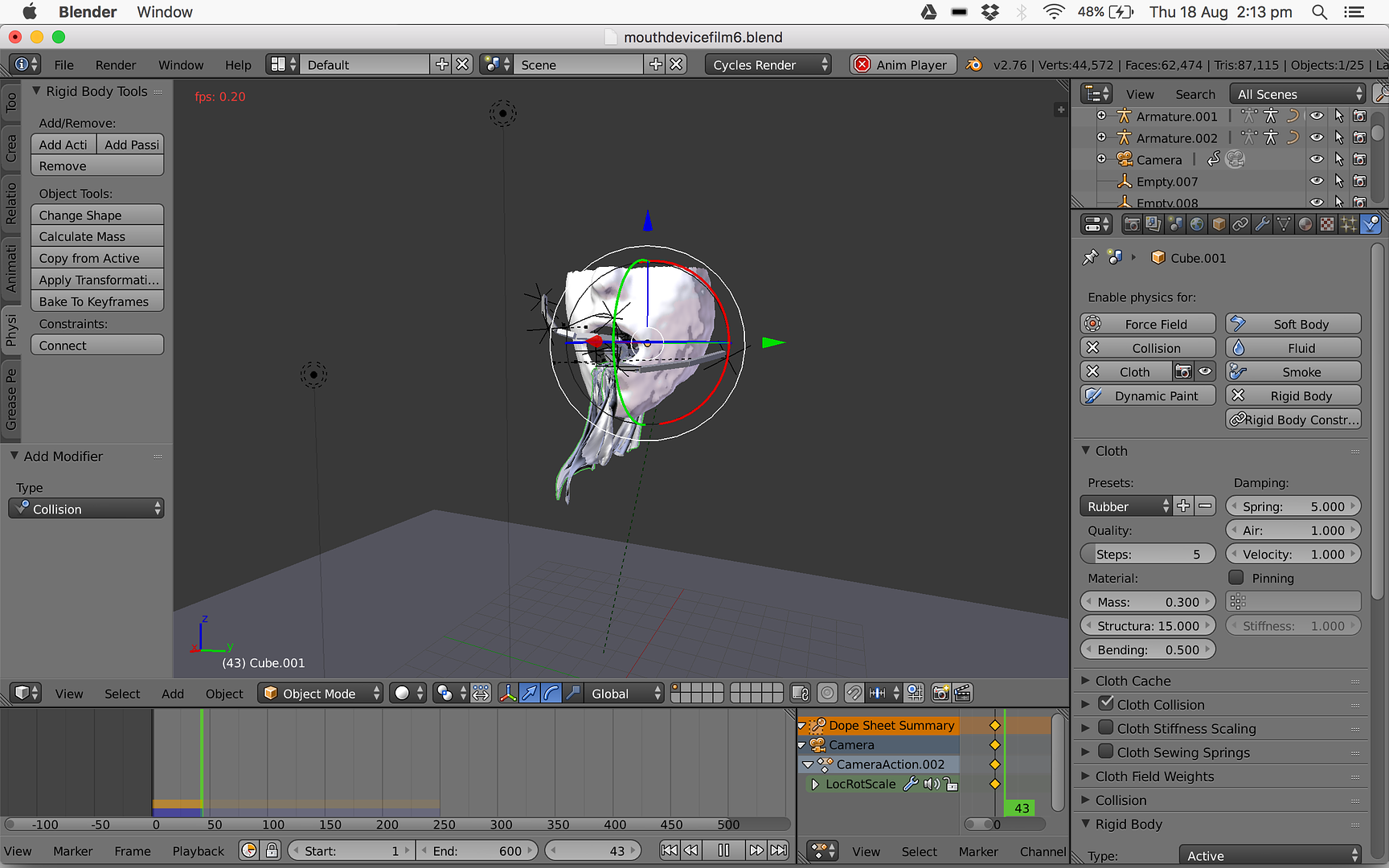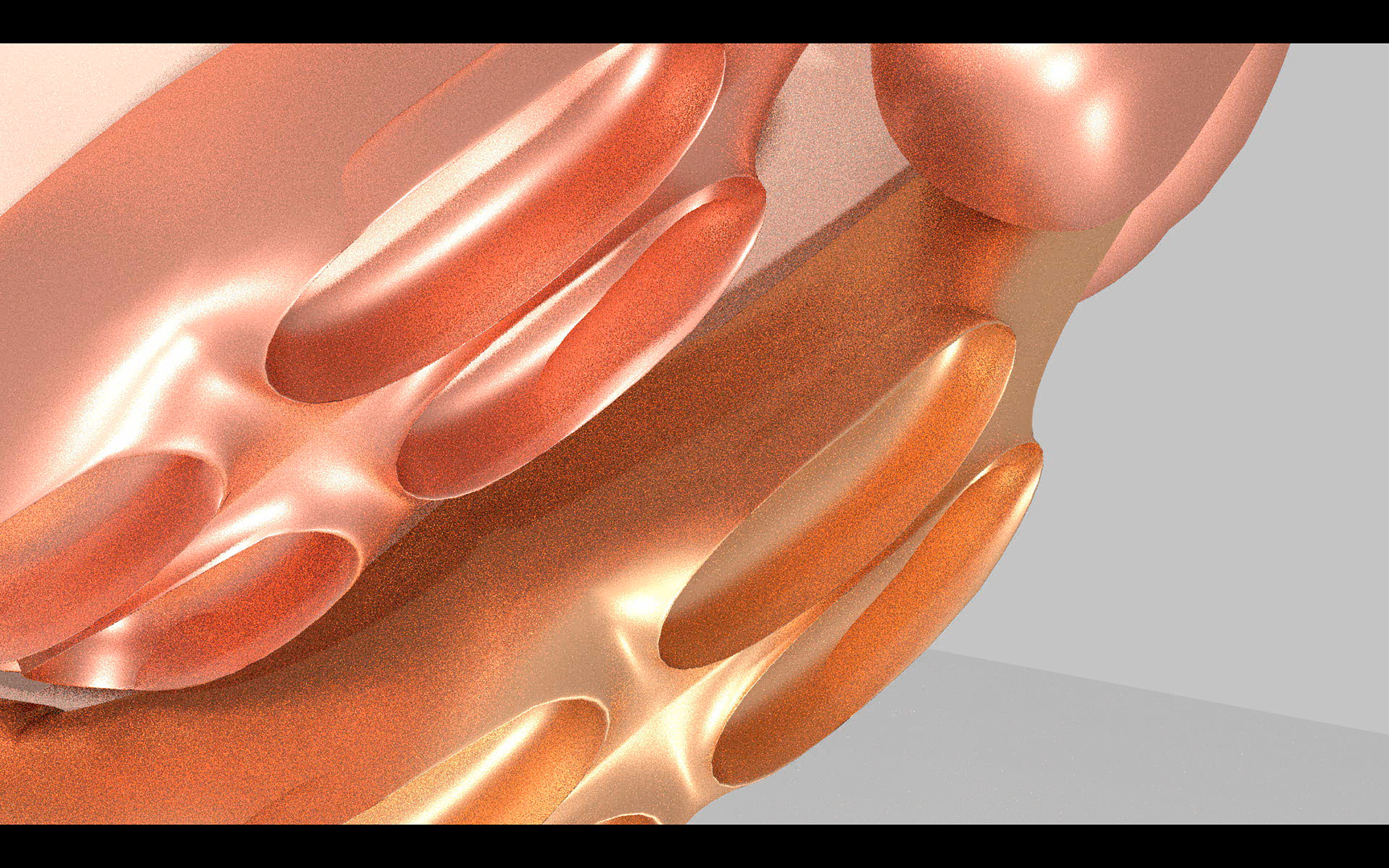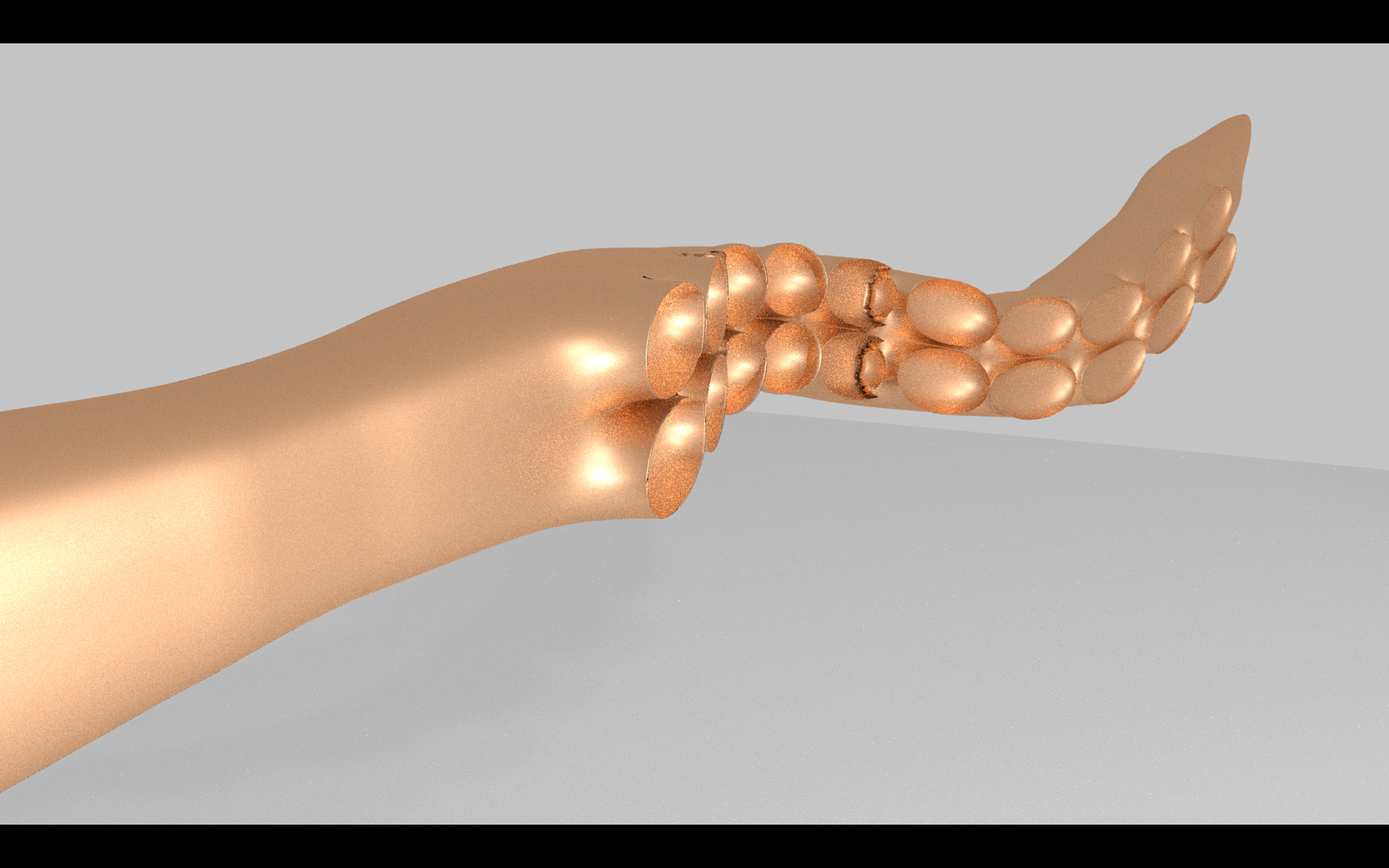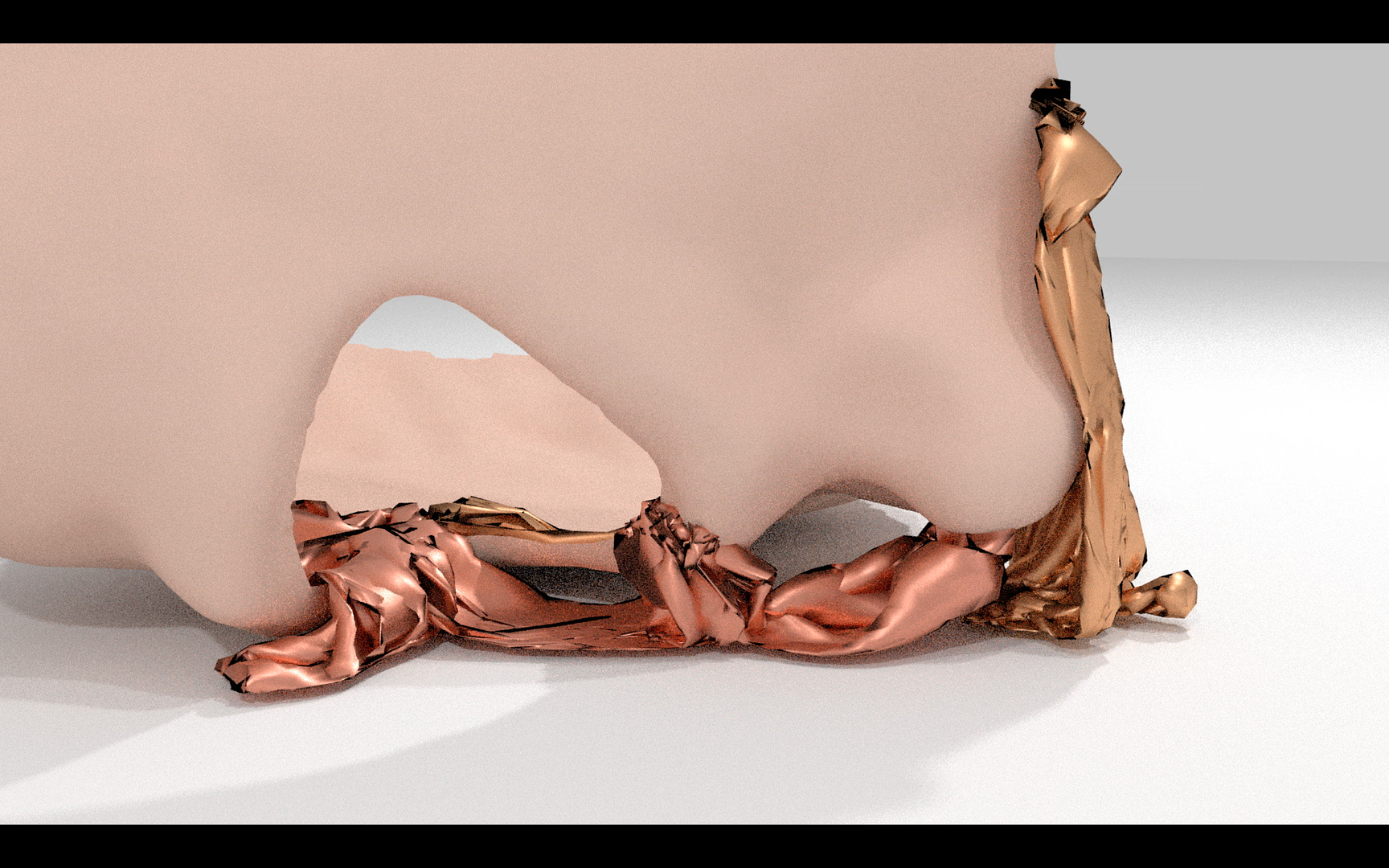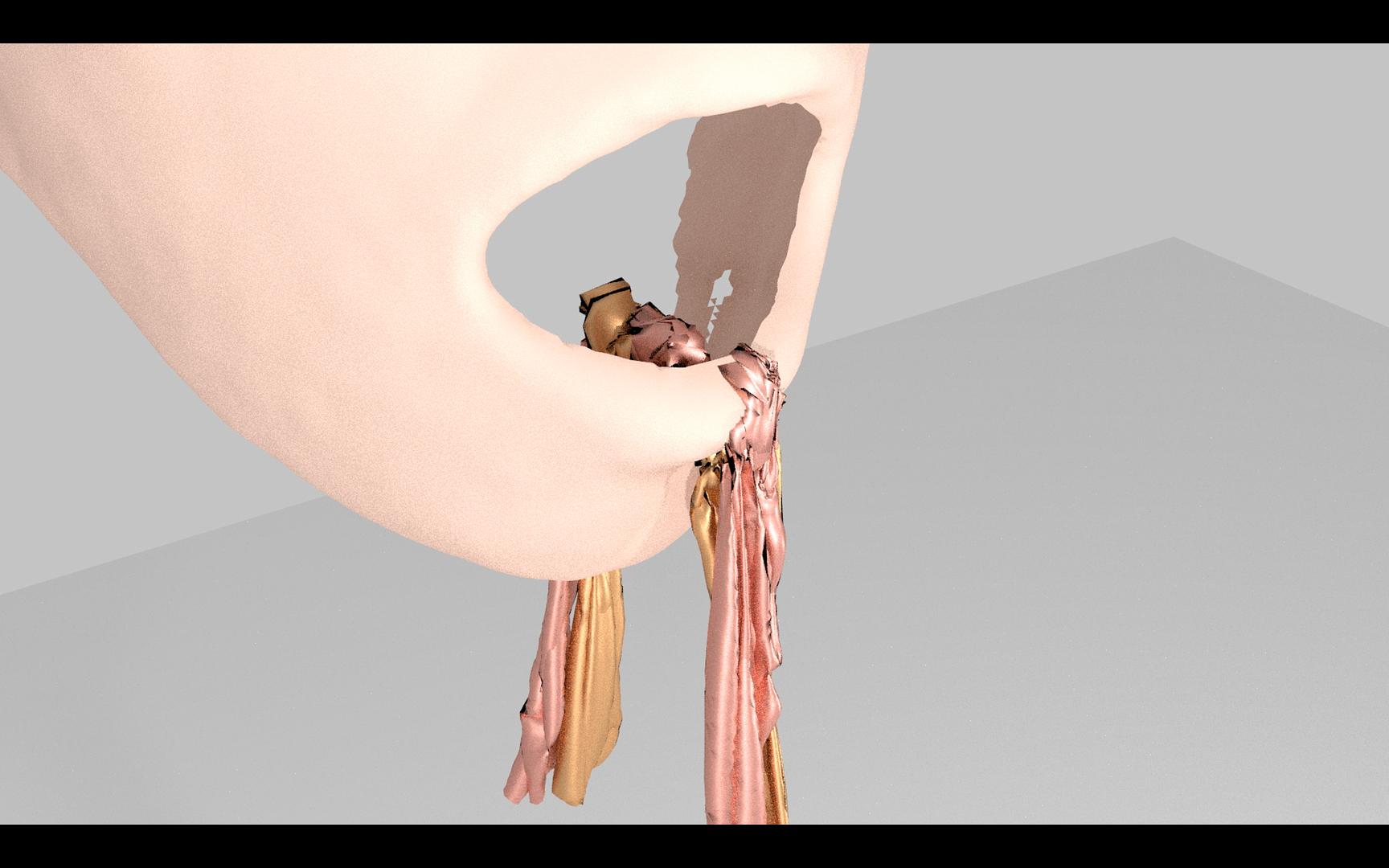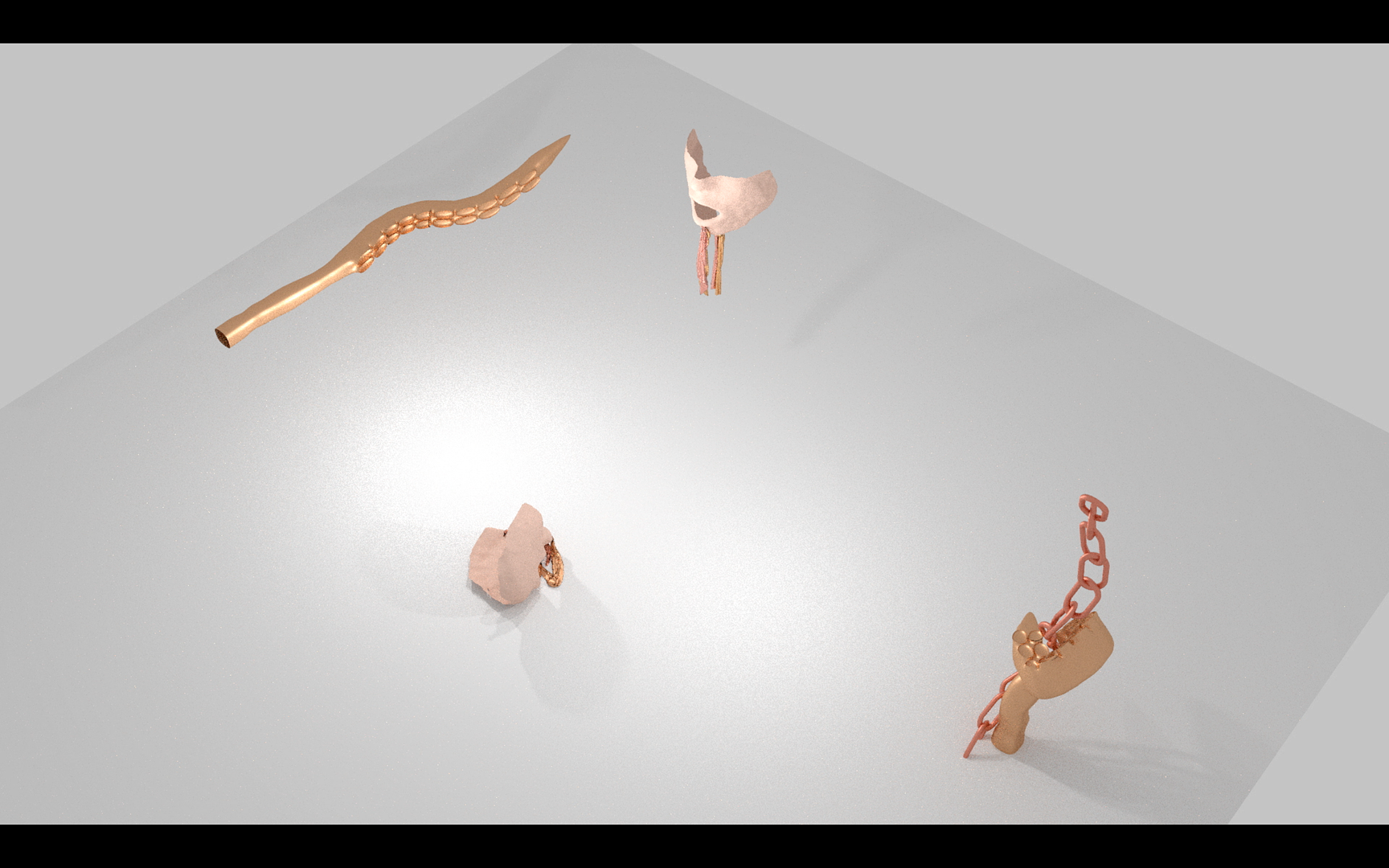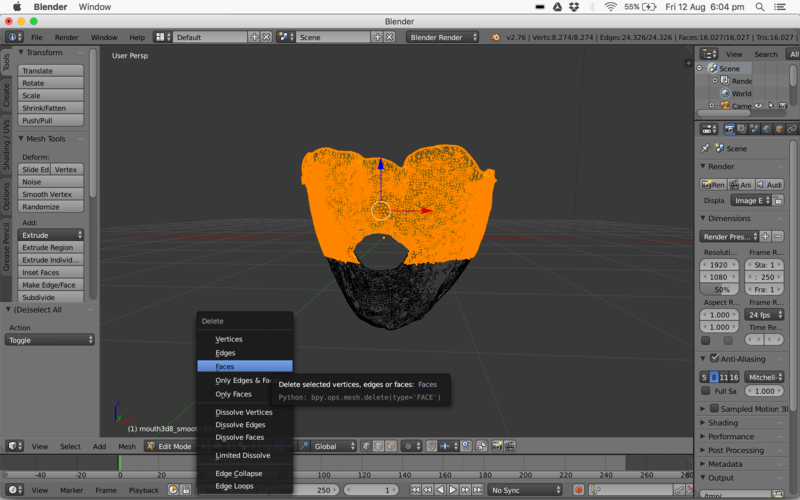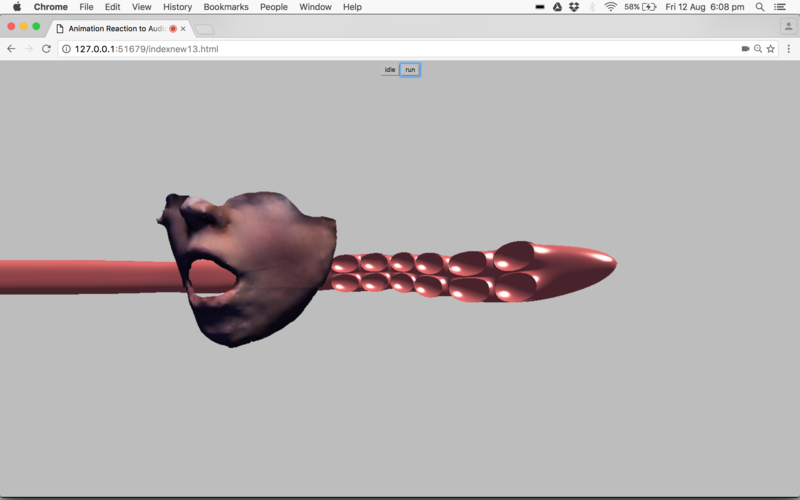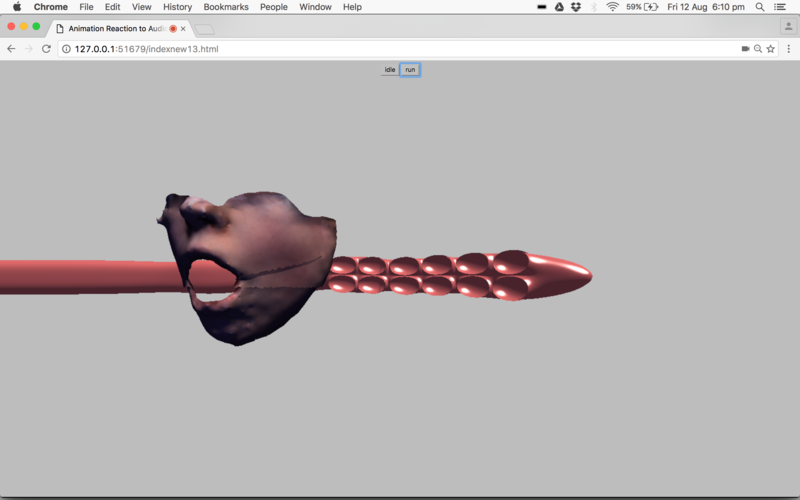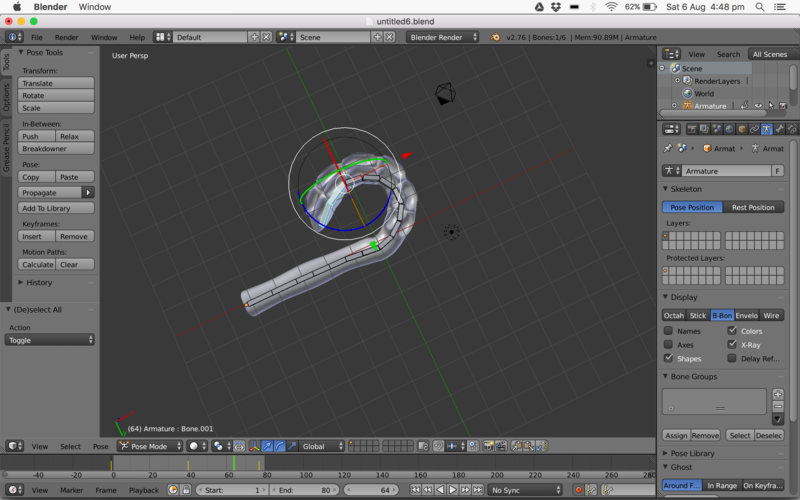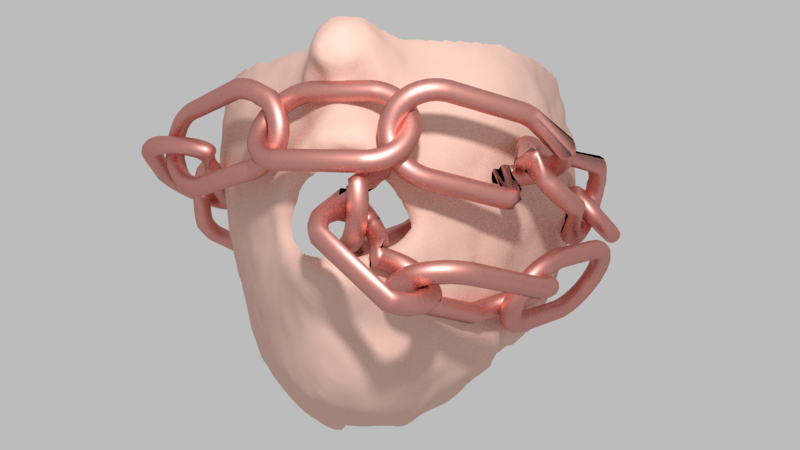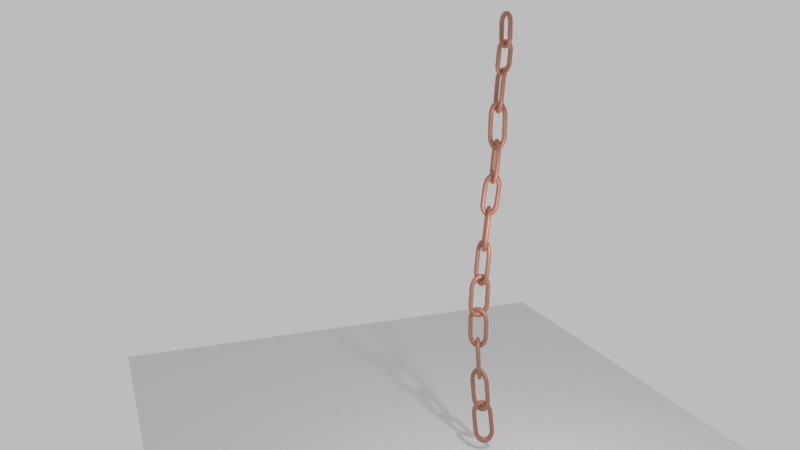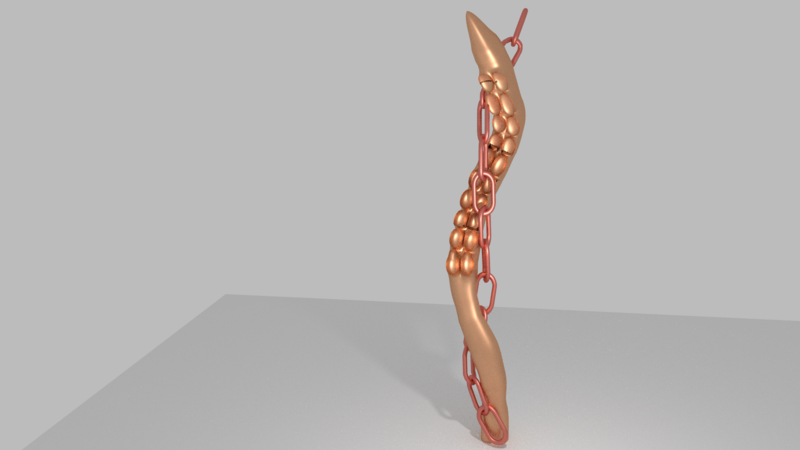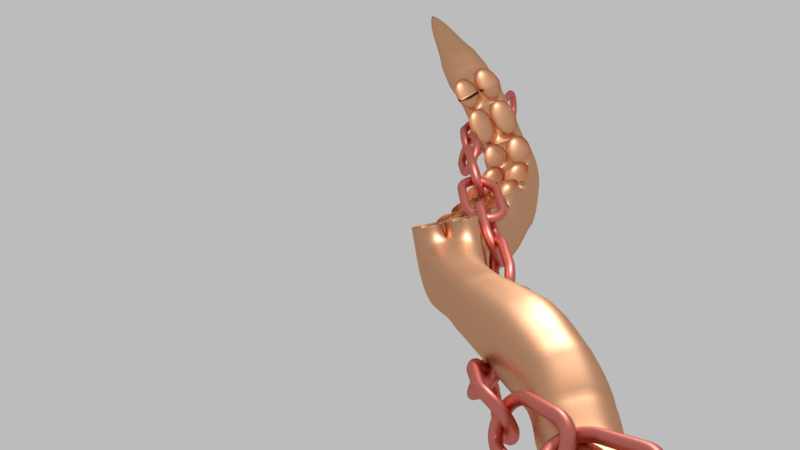This is the code used in the final version of Get User Voice that was presented as part of Tentacular Voice: A Solo Exhibition. Utilising JavaScript to create an interactivity between the frequency value from a computer’s internal microphone and the rotation of a .obj file. Also incorporated is an exported layered animation from Blender that is triggered using the keyboard keys F, G and H.
<!DOCTYPE html>
<html>
<head>
<title>Animation Reaction to Audio Frequency of Mic Audio 1</title>
<style>
body{margin: 0;padding: 0; background: #000;}
canvas{display: block;}
a{
color: #0080ff;
}
.info{
color: #fff;
text-align: center;
position: absolute;
top: 0;
box-sizing: border-box;
width: 100%;
padding: 5px;
}
</style>
<script src=”three.js-master/build/three.js”></script>
<script src=”three.js-master/examples/js/loaders/OBJLoader.js”></script>
</head>









